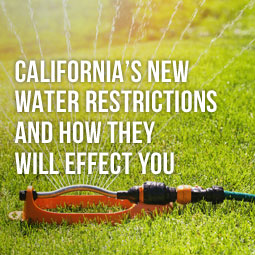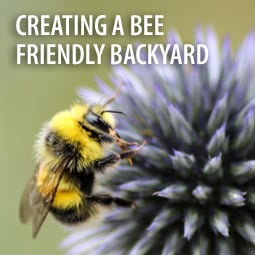 No doubt you’ve heard about our state’s brand new water conservation laws. The two bills were signed by Gov. Jerry Brown on May 31st. Together, they require municipalities, water districts, and agricultural water authorities to create permanent plans to reduce water usage. They have until 2022 to do that, and until 2027 to achieve their reduction goals. The new laws set stiff fines if agencies fail to comply.
No doubt you’ve heard about our state’s brand new water conservation laws. The two bills were signed by Gov. Jerry Brown on May 31st. Together, they require municipalities, water districts, and agricultural water authorities to create permanent plans to reduce water usage. They have until 2022 to do that, and until 2027 to achieve their reduction goals. The new laws set stiff fines if agencies fail to comply.
Although we are technically no longer experiencing drought, the threat is always there. Gov. Brown says the laws will help communities and water users to be prepared, and to “use our precious resources wisely.” In fact, the new mandates call for a residential indoor water usage target of 55 gallons per day per person (stepping down to 50 gallons by 2030). There will also be a limit (not yet determined) on residential outdoor water usage.
Water providers will also be required to address the issue of water loss from leaking pipes.
Reality vs. fear
Already, there has been a certain amount of uproar, with rumors flying that water restrictions will be so onerous you won’t be able to shower and complete household chores on the same day. One complainer went even farther, questioning how much the fine would be if someone dared to “take a shower, do laundry, AND run your sprinklers all in the same day.” No worries, says the Sacramento Bee, “The shower and laundry police won't be knocking on doors anytime soon.”
Let’s talk about those sprinklers, though
The amount of water your lawn requires depends on its size and the weather. But an average homeowner sprinkles 56,000 gallons onto their lawn each year. That would be more than 4,600 gallons per month, but of course you don’t water at the same rate year round, so the most excessive waste happens in summer. And water isn’t the only excessive cost associated with natural grass.
Why do you still have natural grass, anyway?
Contrary to a few well-publicized comments from various individuals, the new restrictions do not define how you will use your household water. They set target amounts for indoor and outdoor household usage. How you divvy that up is a matter of personal choice.
A natural grass lawn is by far the greatest residential water-hog. So if “running your sprinklers” to maintain your live grass is a still a priority at your house, then – yep – you may have to rethink how long you stand in the shower. Or whether it makes sense to wash your clothes or dishes when the machine is only half full.
The Mercury News suggests that water agencies are likely “to offer more rebates for home owners and business owners who replace lawns with drought tolerant plants,” among other incentives. They go on to warn that “agencies could also limit the hours and days of lawn watering, even when droughts are not occurring.”
Again, we ask: why do you still have a natural grass lawn?
Artificial grass does everything for your landscape and outdoor living that live grass can do, only better. And it is amazingly versatile. Here at Heavenly Greens we offer more than two dozen varieties perfect for everything from lawns to putting greens to kid and dog spaces.
Artificial grass looks fabulous every day, all year round, no matter the weather. Drought? So what? Faux grass doesn’t need water. A periodic rinse with the hose is all it takes to remove dust and pet residue.
And that potential rebate for choosing drought-tolerant plants to surround your new fake lawn? Icing on the cake! Smart gardeners choose these plants anyway. They not only conserve water, there is nothing “conservative” about their variety or beauty.












